A barn-inspired center at Oregon’s second largest state park is a beacon for the community.
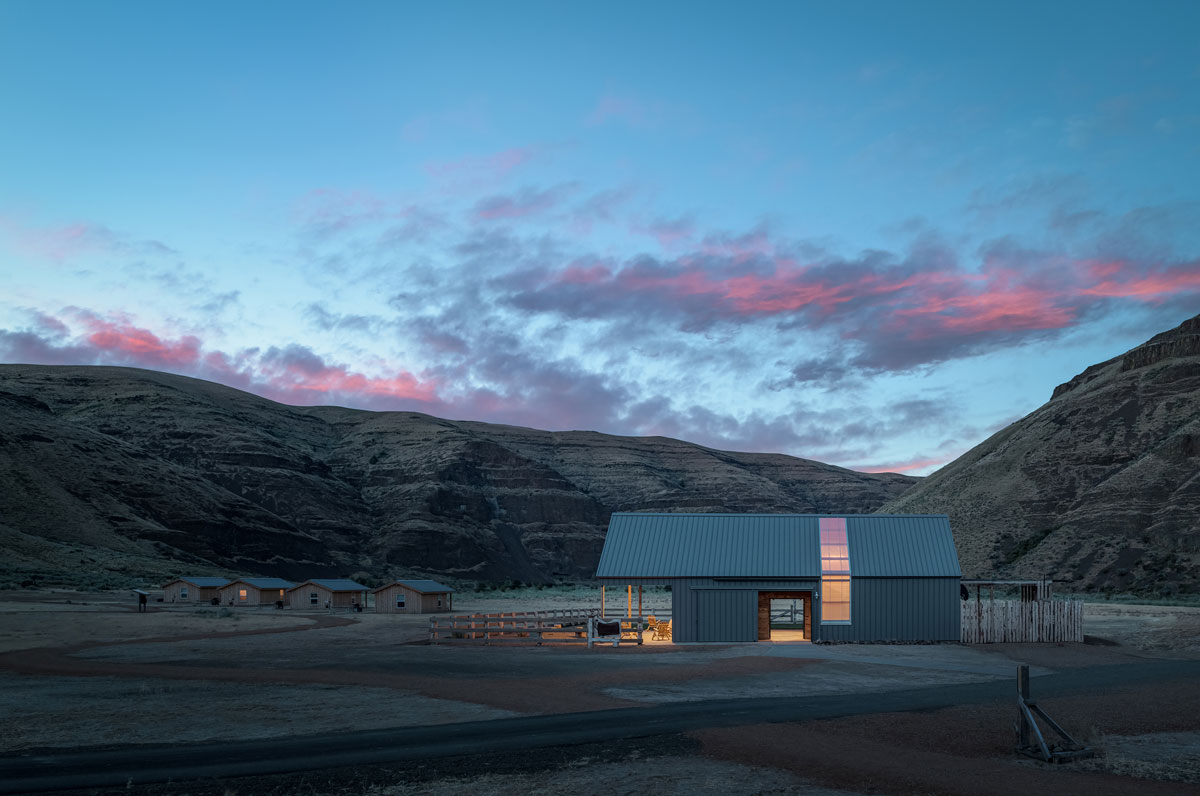
Photo by Gabe Border
PROJECT: Cottonwood Canyon Experience Center
LOCATION: Wasco, Oregon
COMPLETION: October 2018
Size: 1,500 square feet
Architect: Signal Architecture + Research
Landscape Architect & Master Plan: Walker Macy
Structural Engineer: Lund Opsahl
Contractor: Tapani Inc
Solar: Sunbridge Solar / Solarworld
SOLAR ENERGY: Solar City
In 2016 Oregon State Parks set out to create a recreation experience that was both inspiring and aligned with the scale of the landscape without being disruptive. As part of that experience, the parks department brought on Portland-based Walker Macy to draw up a master plan that included six cabins, a shower/bath facility, and a beautiful centerpiece—the Cottonwood Canyon Experience Center. Signal Architecture + Research was brought on to bring the experience center to life.
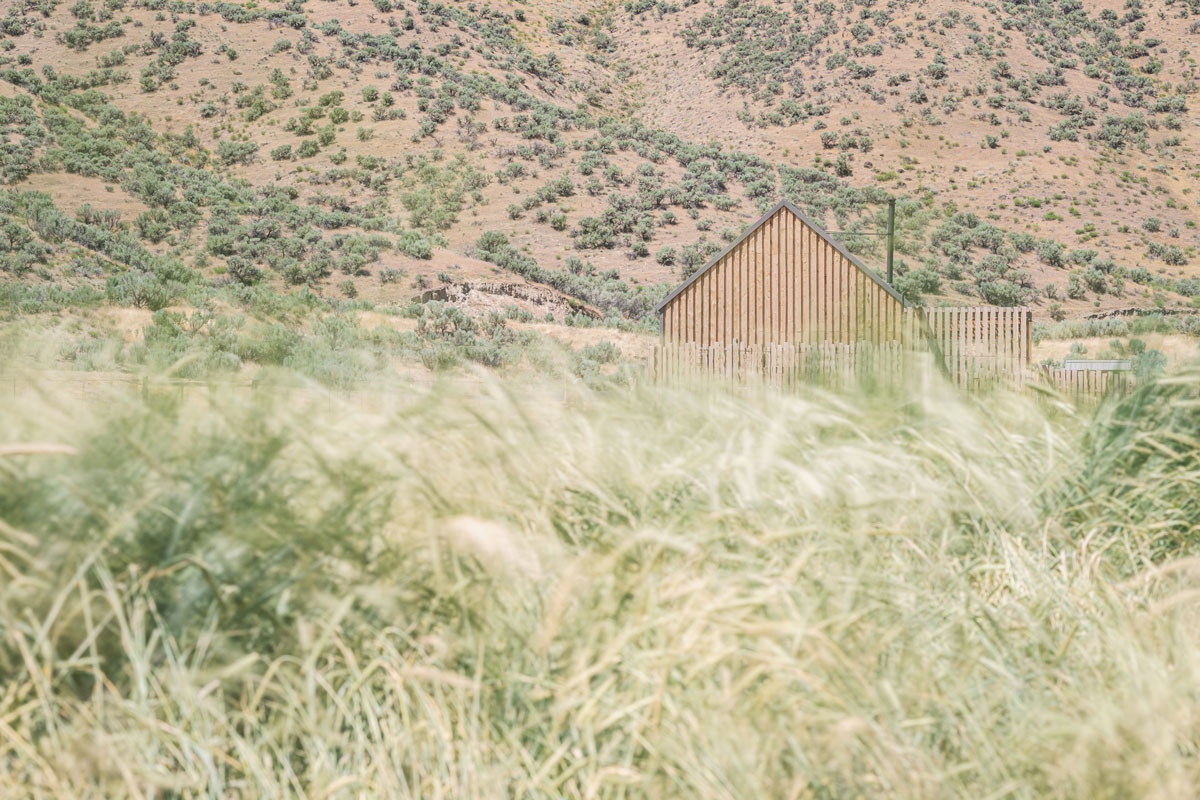
Photo by Gabe Border
“We had the opportunity to design and build a facility that is simultaneously utilitarian, sustainable, modern, respectful of history, and beautiful in an inspiring landscape,” says Mark Johnson, principal of the Seattle-based architecture firm. “That takes collective vision from ownership, management, design, and construction to see to implementation.”
The team as a whole wanted the project to be light on the land. “From a design approach, we were inspired by the resourcefulness of the ranchers who historically used the site,” Johnson says. “Low-tech to no-tech approaches coupled with current technology allowed the design to use less, produce power, and stand the test of time in the desert landscape. The adage of using the right tool for the job was a solid guiding principle in creating a sustainable building in rural country.”
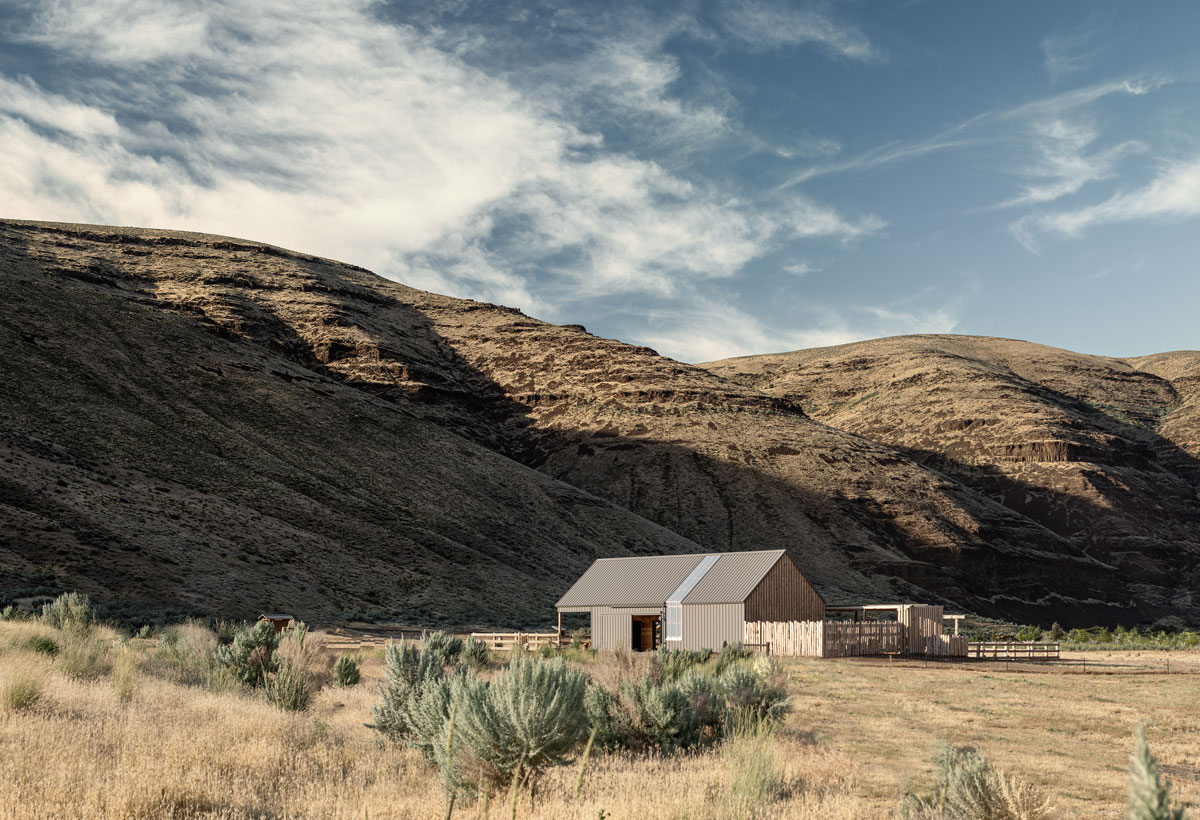
Photo by Gabe Border
Already the building is being used by groups of all kinds, and there’s talk of what a great wedding venue it would make. “The setting is spectacular, and the availability of services for everything from a rugged hike or paddle through the John Day Wilderness to a formal gathering under the stars will work perfectly there,” Johnson says.
The center is placed so it is a visible capstone facility in the park while recognizing the prominence of the historic barn on the site. It’s oriented so that the strong, metal-clad side faces the weather, while the side facing the meadow is protected from the wind and opens up to allow activities to spill out into the landscape. “The Cottonwood landscape is breathtaking for its scale, fragile ruggedness, and marker of time and geology,” Johnson says. “Places like this inspire visitors to learn more about their world and how they can participate to protect it.”
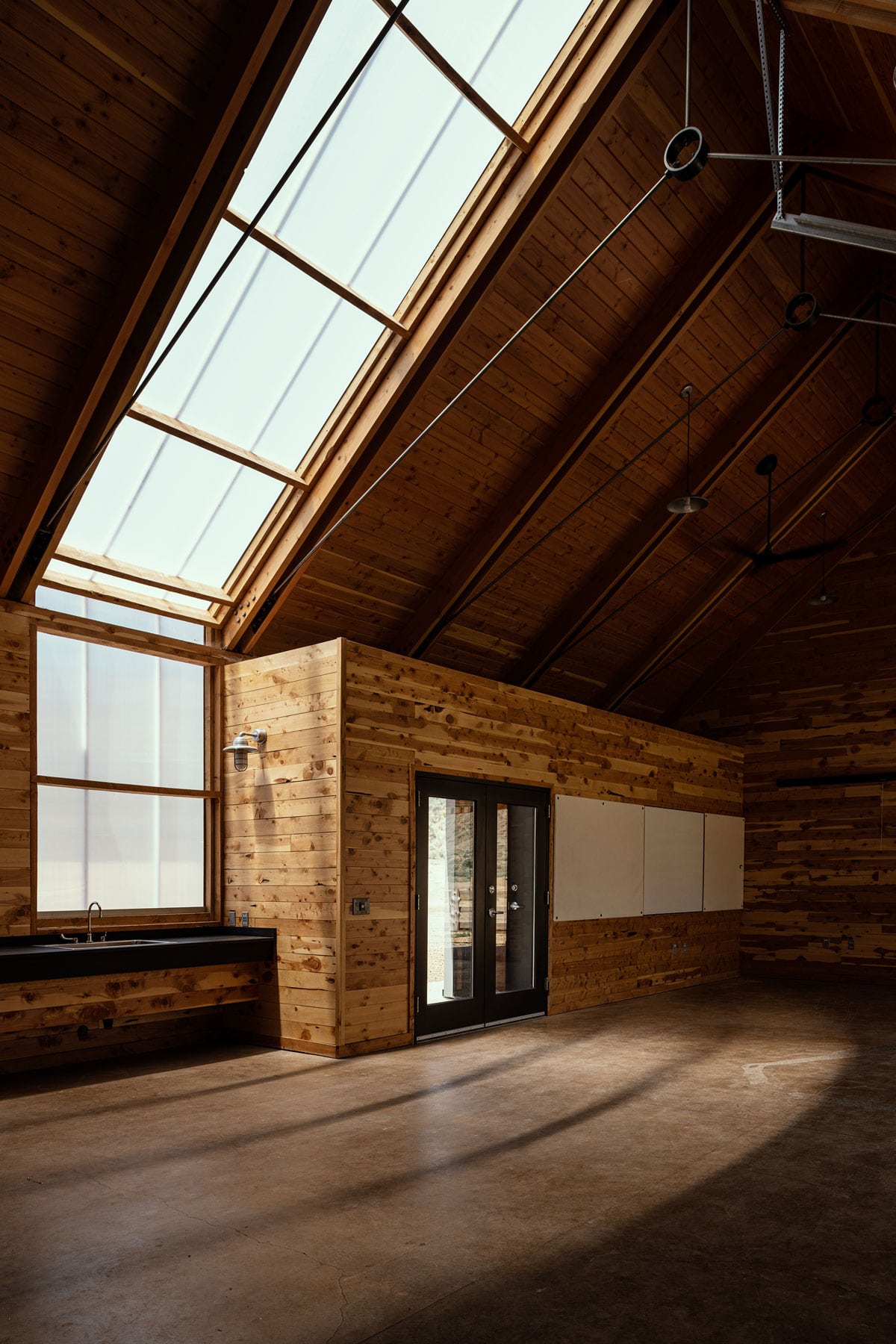
Photo by Gabe Border
The center is made using “honest materials” like juniper—an invasive plant species in central Oregon. “It’s very hardy and has an oily wood, similar to cedar, and as a result is insect and rot resistant,” says Mark Johnson, the project’s principal. The metal siding is reminiscent to the corrugated barns in the valley and will endure hot summers and cold winters. The concrete floor is durable underfoot and can be washed or swept for easy cleanup. “None of these materials need paint for upkeep, with their appearance getting better over time.”

Photo by Gabe Border
The steel chords of the roof trusses are made of a pipe section and metal rod. “The simple form is inspired by the utilitarian equipment and homemade tools that can be found on the site,” Johnson says. “We approached Marjorie Lund and Shawn Roberge of Lund | Opsahl with the idea and a sketch, and they engineered it to maintain the lightness and simplicity we envisioned.”
“The sunlight and shadow in the desert landscape is powerful,” Johnson says. “Arbors are an important part of the ranch vernacular, creating shade from the sun and a windbreak in the afternoon. The arbor provides a great place to sit that shows the changing path of the sun through lines of shadow on the patio. The curved lines come from the sinuous character of the juniper wood. We extended the patio to the west and down the end wall to house the outdoor kitchen, which also serves as a windbreak to the patio.”

Drawing courtesy of Signal Architecture + Research
The project’s lead landscape architect, Ian Holzworth of Walker Macy, envisioned a map of the John Day River traveling through the center so visitors could orient themselves in the valley. Working with Tapani Construction, Signal Architecture + Research prepared drawings that they crafted into metal templates that were used to sandblast the map onto the floor.
Johnson says light plays a large part of most if not all of the firm’s projects. “The ribbon serves as a beacon to visitors, indicating that when the building is occupied, the ribbon is luminous, inviting others and showing that the place is active through an expressive moment in the landscape. The scale of the ribbon can be linked back to corrugated panels on barns of the region, and we stretched that common element to make a signature moment.”
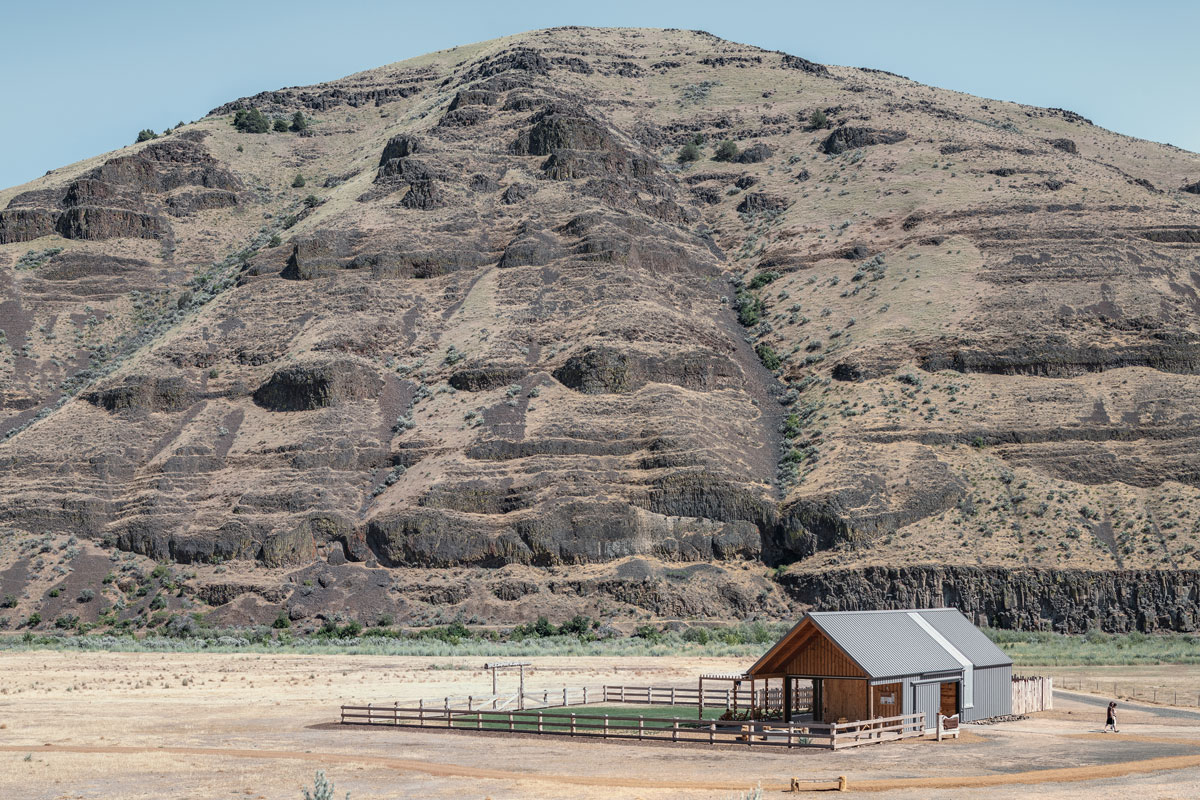
Photo by Gabe Border
